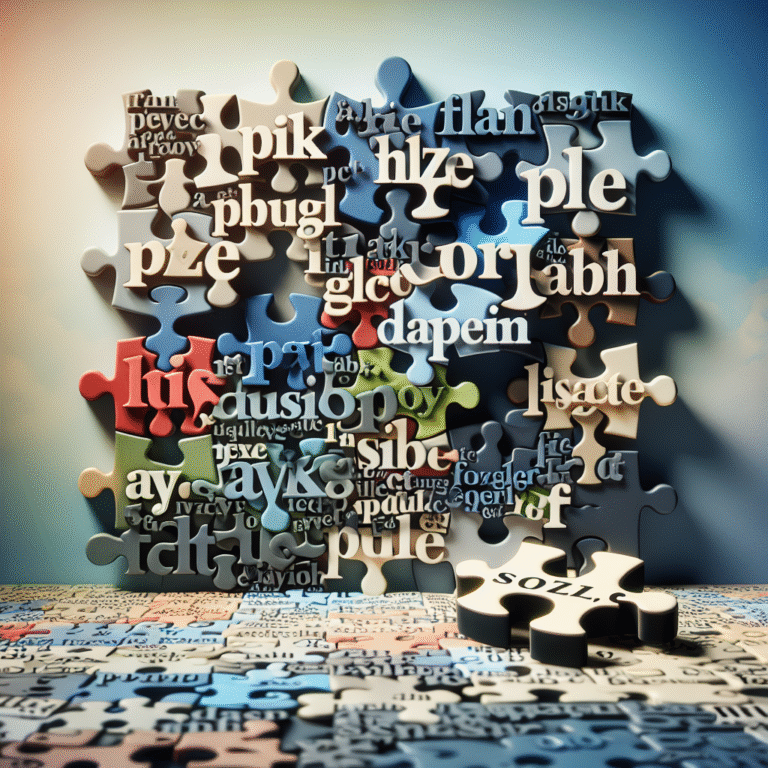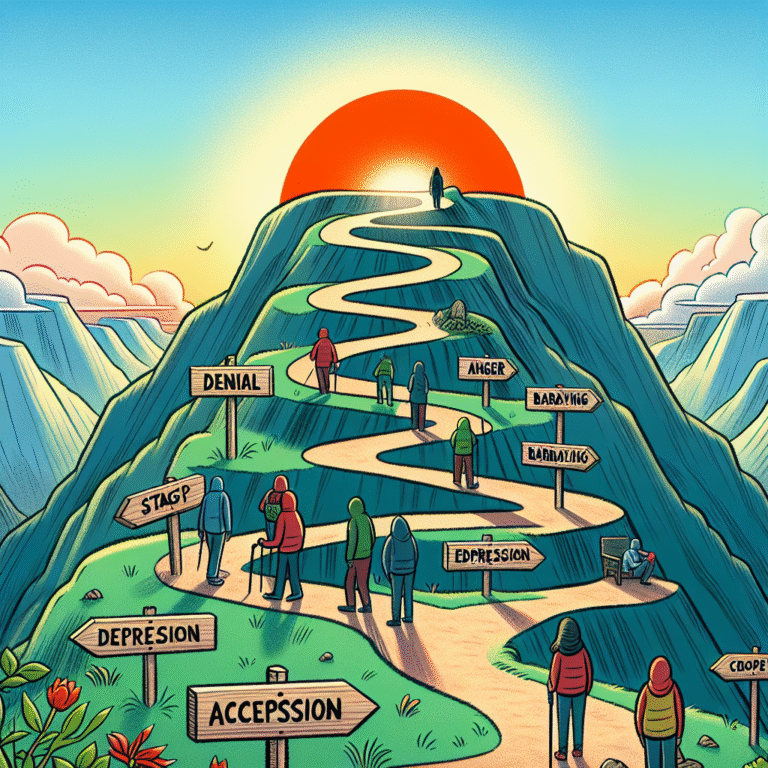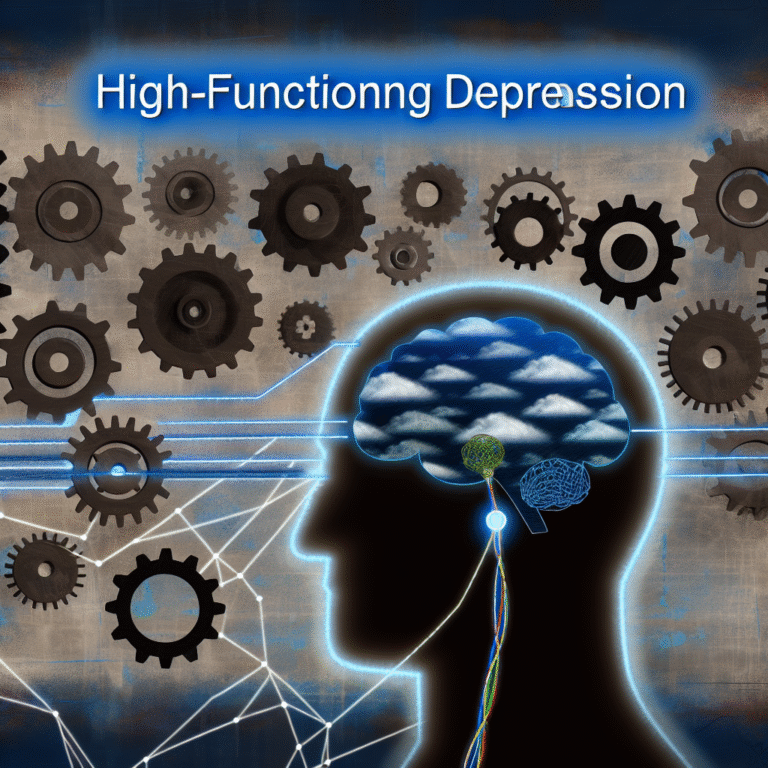
Ever wondered why some relationships feel easy, while others are full of stress? It might be because of attachment styles. These styles are formed early in life and shape our relationships.
Learning about attachment theory can help you understand your attachment patterns. It can also help you build a secure attachment. This can make your relationships more rewarding and meaningful.
We’ll look into the different attachment styles and how they affect our relationships. We’ll also share real-life examples to help you develop a secure attachment.
Key Takeaways
- Understanding attachment styles is key to healthy relationships.
- Attachment theory sheds light on our attachment patterns.
- Having a secure attachment can make relationships more fulfilling.
- Real-life examples can help you build a secure attachment.
- Attachment styles are influenced by early life experiences and shape our relationships.
The Blueprint of Human Connection
At the heart of every relationship is a blueprint of human connection. This blueprint is shaped by our attachment styles. It’s not just a simple template but a complex framework influenced by our early interactions and emotional responses.
Understanding this blueprint is key to knowing why some people connect easily while others struggle. It’s about grasping the underlying reasons behind these differences.
The Invisible Forces That Shape Relationships
Attachment styles are invisible forces that greatly impact our relationships. They shape how we see and react to our caregivers’ responses to our needs. This early interaction sets the stage for our attachment style, which can be secure, anxious, avoidant, or disorganized.
Each style affects how we connect with others. Secure attachment is the foundation of healthy, fulfilling relationships. It’s about feeling safe and connected.
The impact of these styles is deep. They shape our expectations, behaviors, and emotional responses in relationships. By understanding these forces, we can improve our connections with others.
Why Some People Connect Easily While Others Struggle
The ease or difficulty in forming connections often comes down to attachment style. People with a secure attachment style tend to connect easily. They are comfortable with intimacy, can manage their emotions well, and value independence.
On the other hand, those with insecure attachment styles may find it harder. Their early experiences have shaped different attachment templates. These can make relationships more complicated.
Recognizing one’s attachment style is the first step to better connections. By acknowledging and working on our attachment patterns, we can build more secure and fulfilling relationships.
What Are Attachment Styles?
Our attachment styles come from early interactions with our caregivers. These interactions shape how we feel and connect with others. They influence our emotional responses in relationships throughout our lives.
Attachment styles are more than just connections with others. They are deep patterns that impact our happiness and how we feel in relationships. Knowing about these styles helps us understand human connections better.

The Science Behind Our Connection Patterns
Attachment styles are based on attachment theory. This theory says our early experiences with caregivers shape our attachment patterns. Research shows these early interactions create lasting neural pathways that affect our emotional regulation and how we behave in relationships.
Neuroscience studies have shown how these early experiences are stored in our brains. For example, secure attachment is linked to healthier brain pathways. These pathways help us deal with emotions and stay flexible in relationships.
How Early Relationships Create Lifelong Templates
Early relationships set the stage for future connections. The care we receive in infancy and early childhood shapes our attachment styles. A caring environment helps us develop a secure attachment style. On the other hand, inconsistent or neglectful care can lead to insecure attachment patterns.
These early patterns can change over time through new experiences and relationships. Yet, the initial patterns often stick with us, shaping our attachment behaviors in adulthood.
The Four Attachment Styles Explained
Research has found four main attachment styles that show how we form and keep relationships. These styles come from our early days with caregivers. They shape our views, actions, and expectations in adult relationships.
Secure Attachment: The Foundation of Healthy Relationships
People with a secure attachment feel good about being close to others. They handle their feelings well and keep their independence. They’re open to deep connections and solve problems together.
Anxious Attachment: The Pursuit of Reassurance
Those with an anxious attachment feel insecure and fear being left. They might cling too much to their partners. They always want reassurance to calm their worries.
Avoidant Attachment: The Comfort in Distance
People with an avoidant attachment value being alone. They find closeness hard and seem distant. They use ways to keep their feelings hidden in relationships.
Disorganized Attachment: The Conflicted Response
A disorganized attachment comes from tough or changing early times. These folks mix anxious and avoidant traits. They find it hard to control their feelings and meet their partner’s needs.

| Attachment Style | Characteristics | Impact on Relationships |
|---|---|---|
| Secure | Comfortable with intimacy, emotional regulation, independence | Healthy, fulfilling relationships |
| Anxious | Insecure, fear of abandonment, overly dependent | Strained, clingy behavior |
| Avoidant | Prioritizes independence, uncomfortable with closeness | Distant, aloof relationships |
| Disorganized | Mixed behaviors, emotional dysregulation | Conflictual, unpredictable relationships |
Knowing these attachment styles helps us understand our relationship patterns. It shows us where we can grow and improve.
Discovering Your Personal Attachment Style
Knowing your attachment style can greatly improve your relationships. It helps you see how you connect with others. This knowledge lets you spot patterns that might affect your bonds with people.
A Mini-Assessment Quiz
Start by taking this mini-assessment quiz. It will help you find out your attachment style. Just answer the questions with what feels true for you in relationships:
- When I’m in a relationship, I often worry that my partner doesn’t love me.
- I feel uncomfortable when my partner wants to be too close.
- I have difficulty trusting my partner.
- I tend to become overly dependent on my partner.
Count your answers and look at the key below. It will tell you your attachment style. This attachment quiz aims to show you your attachment tendencies.
Recognizing Your Patterns in Relationships
After figuring out your attachment style, start to recognize patterns in your relationships. Think about how your style affects your interactions with your partner. For instance, if you’re anxious, you might always ask for reassurance. Knowing these patterns can help you grow into a more secure attachment style.
By facing and working with your attachment style, you can build better, more satisfying relationships. This journey involves looking inward, understanding your emotional needs, and finding ways to manage your attachment patterns well.
From Childhood to Adulthood: How Attachment Evolves
As we grow up, our attachment styles change a lot. This change is influenced by our relationships. It’s a complex process, shaped by early interactions and life experiences.
The Critical Periods That Shape Attachment
Early childhood is key for attachment style development. Interactions with primary caregivers set the stage for future relationships. Responsive and sensitive caregiving leads to a secure attachment. But, inconsistent or neglectful care can result in insecure styles.
How Childhood Experiences Manifest in Adult Relationships
Childhood attachment styles show up in adult relationships in big ways. For example, those with a secure attachment style have healthier, more resilient relationships. On the other hand, anxious or avoidant styles can make intimacy or trust hard.
| Childhood Experience | Adult Attachment Style | Relationship Characteristics |
|---|---|---|
| Responsive caregiving | Secure | Trusting, resilient relationships |
| Inconsistent caregiving | Anxious | Preoccupied with abandonment, seeking reassurance |
| Neglectful caregiving | Avoidant | Difficulty with intimacy, independence |
Can Your Attachment Style Change Over Time?
While early experiences shape attachment styles, they can change over time. Self-reflection, therapy, and positive relationships can help. These can help individuals move towards a more secure attachment.
The Secure Attachment Toolkit
Building secure attachment means recognizing and using certain behaviors and attitudes. These help create deep and meaningful connections. It’s not just about early life experiences. You can develop and strengthen it over time with practice and understanding.
Characteristics That Signal Secure Attachment
People with a secure attachment style show many traits. They have emotional balance, set healthy boundaries, and can share their emotional needs well. They also handle stress well and are happier in their relationships.
Real-Life Examples of Secure Behavior
Secure attachment shows up in everyday actions. For example, someone with a secure attachment can talk openly about their feelings with their partner. They do this without fear of being rejected. They also listen to their partner’s needs with empathy, deepening their bond.
Another sign is being able to keep your independence while being close to someone. This shows that being intimate and having your own space can go together.
The Benefits of Developing Secure Attachment
Having a secure attachment style brings many advantages. It leads to better emotional control, more fulfilling relationships, and greater resilience when facing challenges. People with secure attachment tend to see themselves and others more positively, leading to a more rewarding life.
Also, secure attachment helps in solving conflicts better. People are more likely to stay calm and find solutions that respect both sides’ needs.
Navigating Anxious Attachment in Relationships
Knowing the signs of anxious attachment is the first step to improving relationships. People with anxious attachment often fear being left and seek constant reassurance. This leads to strong emotional reactions in their relationships.
Recognizing Anxious Triggers and Reactions
Anxious attachment can be triggered by feeling distant or ignored by a partner. Common reactions include:
- Increased clinginess or need for reassurance
- Preoccupation with the partner’s whereabouts or activities
- Heightened emotional sensitivity
It’s important to understand these triggers and reactions to find effective ways to cope.
Breaking the Protest Behavior Cycle
The protest behavior cycle is a pattern in anxious attachment. It involves behaviors to get a partner’s attention, such as:
- Sending multiple messages or making repeated calls
- Showing distress or anger
- Engaging in passive-aggressive behaviors
To break this cycle, one needs to be aware of their actions and learn to manage anxiety.
Scripts for Self-Regulation During Activation
Managing anxious attachment requires self-regulation. Using specific scripts can help calm emotions:
- “I am feeling anxious right now, but I can handle it.”
- Deep breathing exercises can reduce tension.
- Doing physical activity can distract from anxious thoughts and improve mood.
By using these strategies, individuals can better handle anxious attachment. This helps in building a more secure connection with their partners.
The Avoidant’s Guide to Deeper Connection
Understanding avoidant attachment is key to building stronger, more meaningful connections. Those with an avoidant style often seem independent. But this is a way to feel safe and in control.
Understanding Your Need for Independence
Understanding Your Need for Independence
People with avoidant attachment really value being alone. This is because they want to keep their emotions to themselves and avoid feeling vulnerable. Recognizing this need is the first step to change.
- Acknowledge your need for alone time and respect it.
- Communicate your needs clearly to your partner.
- Understand that independence and intimacy are not mutually exclusive.
Recognizing Deactivation Strategies
Deactivation strategies help avoidants keep their distance. These can include hiding feelings, avoiding emotional talks, or stepping back physically.
- Be aware of when you’re using deactivation strategies.
- Reflect on the triggers that lead to these behaviors.
- Practice self-compassion when you recognize these patterns.
Scripts for Staying Present During Discomfort
It’s important to stay present, even when it’s hard. Using specific scripts can help manage anxiety or vulnerability.
- When feeling overwhelmed, say to yourself, “I am safe in this moment.”
- Practice deep breathing exercises to calm the nervous system.
- Use positive self-talk to reframe negative thoughts.
By understanding and addressing avoidant tendencies, individuals can work towards forming more secure and meaningful relationships.
Healing Disorganized Attachment Patterns
Understanding the roots of disorganized attachment is key to healing. It often comes from early trauma or abuse. This makes it hard to form and keep healthy relationships. To heal, we need to tackle the trauma and build a sense of safety and security.
Addressing the Roots of Attachment Trauma
Attachment trauma usually comes from neglect, abuse, or unstable caregiving in early life. To heal, we must first face these experiences and their effects on our attachment. Therapy, like trauma-focused cognitive-behavioral therapy, can help a lot.
By knowing why we have disorganized attachment, we can start to heal. A supportive therapist helps by creating a safe space. This makes it easier to work on healing.
Scripts for Creating Safety in Relationships
Creating safety in relationships is vital for healing. This means setting clear boundaries, managing emotions, and talking well. For instance, using scripts that say “I am safe” or “I need reassurance” helps.
These scripts help build trust and secure attachment. They make it easier to feel safe and understood in relationships.
The Dance of Attachment Styles in Relationships
In the world of attachment theory, how different attachment styles interact is key to a relationship’s success. When people with different styles come together, it can either strengthen their bond or lead to disagreements. Knowing how these styles interact is vital for creating and keeping healthy, happy relationships.
When Anxious Meets Avoidant: Breaking the Cycle
The mix of anxious and avoidant attachment styles can be tough. The anxious person craves closeness and reassurance, while the avoidant one wants space. To overcome this, both must understand their patterns and work towards a more balanced connection. The anxious one needs to manage their feelings better, and the avoidant one should open up more.
How Secure Partners Can Support Insecure Attachment
Securely attached partners can greatly help their insecure counterparts. By being reliable, responsive, and emotionally present, they make their partners feel secure. This means listening well, acknowledging feelings, and reassuring without being too much or too little.
Finding Compatibility Across Different Styles
Different attachment styles can be a hurdle, but they don’t mean a relationship can’t work. In fact, relationships with different styles can flourish if both are willing to meet each other halfway. This might mean finding a middle ground between closeness and independence or learning to talk openly about emotional needs.
| Attachment Style Combination | Potential Challenges | Strategies for Success |
|---|---|---|
| Anxious-Avoidant | Pursuit-distance cycle, emotional dysregulation | Self-regulation, gradual exposure to intimacy |
| Secure-Insecure | Insecure partner’s emotional needs, secure partner’s frustration | Consistency, emotional availability, validation |
| Disorganized-Secure | Trust issues, emotional turmoil | Creating safety, therapeutic support |
Practical Scripts for Secure Communication
Learning to communicate securely is key in today’s world. It builds trust, understanding, and closeness in relationships. Using simple scripts can help express needs, set limits, solve problems, and deepen emotional bonds.
It’s important to clearly state your needs in relationships. Say “I feel ___ when ___, and I need ___” to share feelings and needs without blame. For example, “I feel left out when you don’t call me, and I need to talk more often.” This way, you avoid confusion and create a supportive space.
For Setting Boundaries: “I care about you AND I need ___”
Setting boundaries is essential for keeping your own identity and respect in a relationship. Use “I care about you AND I need ___” to show you care while stating your needs. For example, “I care about you, and I need some time alone this weekend.” This helps set healthy limits and respect each other.
| Script | Purpose | Example |
|---|---|---|
| “I feel ___ when ___, and I need ___” | Expressing Needs | “I feel happy when you’re affectionate, and I need more of it.” |
| “I care about you AND I need ___” | Setting Boundaries | “I care about you, and I need some space.” |
For Conflict Resolution: The Repair Conversation Template
Dealing with conflicts in a healthy way is vital for a strong relationship. The Repair Conversation Template helps by acknowledging issues, sharing feelings, and finding solutions together. For example, “I felt left out when you didn’t include me. How can we make sure to include each other more?” This script helps in understanding and healing.
For Emotional Intimacy: Vulnerability Without Overwhelm
Building emotional closeness means being open and vulnerable. Share your feelings in a way that’s not overwhelming. For instance, “I’m feeling overwhelmed today, and I need your support. Can we talk about it?” This encourages deep connection while respecting emotional boundaries.
Using these scripts daily can greatly improve your relationships. Secure communication grows with practice and patience, leading to more rewarding and lasting connections.
Transforming Anxious Attachment: Scripts That Work
People with anxious attachment can greatly benefit from learning specific scripts. These scripts help build reassurance and stability in their relationships. By using these scripts, they can start to change their attachment style. This change moves them towards a more secure and less anxious state.
Self-Talk for Anxious Moments
Managing anxious attachment involves using positive self-talk during anxious times. It’s about recognizing when you feel anxious and then calming yourself down with reassuring thoughts. For example, you might tell yourself, “I am safe, and my feelings are valid.“
Good self-talk can help control your emotions and lessen anxious feelings. This practice builds emotional strength and reduces how often you feel anxious.
How to Ask for Reassurance Without Creating Dependency
It’s natural for people with anxious attachment to ask for reassurance. But it’s important to do so in a way that doesn’t make them too dependent on their partner. A good approach is to clearly state your needs without expecting your partner to fix all your anxiety. For example, saying “I’m feeling a bit insecure about our plans, can you reassure me that we’re on the same page?” is a good way to ask for reassurance.
This method lets you feel understood and heard while keeping your independence in managing your anxiety.
Partner Scripts: “I’m here and I’m not leaving”
Partners of those with anxious attachment can also offer a lot of reassurance. Using specific scripts can show support and stability. For instance, a partner might say, “I’m here for you, and I’m not going anywhere. I’m committed to our relationship and to supporting you through any challenges.“
| Script Type | Example | Benefit |
|---|---|---|
| Self-Talk | “I am capable of managing my anxiety.” | Emotional Regulation |
| Reassurance Seeking | “Can you reassure me that we’re okay?” | Reduced Anxiety |
| Partner Reassurance | “I’m here for you, and I’m committed to our relationship.” | Increased Security |
Building Connection for Avoidant Attachment
For those with avoidant attachment, building a connection is a special task. It’s about finding a balance between wanting closeness and needing space. This balance is key to creating deeper bonds without feeling overwhelmed.
One important strategy is gradual exposure to emotional intimacy. This means slowly getting closer emotionally, step by step. It lets the person with avoidant attachment feel safe and open up at their own pace.
Gradual Exposure to Emotional Intimacy
Starting small is a good way to get closer emotionally. Begin by sharing small things in a safe place. This builds trust and confidence in sharing feelings. As you get more comfortable, you can have deeper talks.
- Start with small things to build trust.
- Slowly get into deeper conversations.
- Pay attention to how your partner feels and reacts.
Scripts for Communicating Your Need for Space
Telling someone you need space is important for those with avoidant attachment. Using clear words helps avoid confusion and keeps the connection strong. For example, saying, “I need some time to myself to recharge, but I value our connection and will reach out soon,” works well.
“I love spending time with you, but I also need some alone time to feel my best. Let’s schedule regular check-ins to stay connected while respecting my need for space.”
Partner Scripts: Respecting Independence While Maintaining Connection
Partners can help keep the connection strong by respecting the need for independence. Saying, “I understand that you need some space, and I’m here when you’re ready to talk or hang out,” reassures without being too much.
By using these strategies, people with avoidant attachment can build stronger, more meaningful relationships. This brings a sense of security and understanding to their bonds.
The Path to Earned Secure Attachment
Through therapy, people can earn earned secure attachment. This leads to better relationships. It starts with understanding and changing how we attach, shaped by our early life.
Therapeutic Approaches That Change Attachment Patterns
Many therapeutic approaches help change how we attach. These include:
- Attachment-focused therapy, which directly addresses attachment issues.
- Emotionally focused therapy, which helps individuals understand and reorganize their emotional responses.
- Mindfulness-based therapies, which promote self-awareness and self-regulation.
These therapies help us see our attachment styles. They help us notice patterns in our relationships. And they teach us to connect more securely with others.
Success Stories: From Insecure to Secure Connection
Many success stories show how people can change from insecure to secure attachment. For instance, those with anxious or avoidant attachment have seen big improvements. This is after they started attachment-focused therapy.
These stories show the value of sticking with it, being aware of ourselves, and having the right therapy. They prove that earned secure attachment is possible.
Conclusion: Your Journey Toward Secure Connection
Building a secure attachment style is a journey that needs understanding, effort, and practice. We’ve looked at different attachment styles, their effects on relationships, and how to build a secure connection. This journey is key to forming deeper and more meaningful bonds with others.
Knowing your attachment style and the patterns in your relationships is the first step. The strategies and scripts we’ve shared can help you start building more secure attachment behaviors. This can lead to more fulfilling and meaningful connections with others.
Starting this journey means being open to self-reflection, communication, and growth. As you work on becoming more securely attached, you’ll not only improve your relationships but also understand yourself better. This journey helps you meet your emotional needs and grow as a person.
By beginning this journey, you’re investing in your emotional health. You’re setting the stage for a more secure connection with others. The rewards of this journey are worth the effort, making it a worthwhile path to follow.















